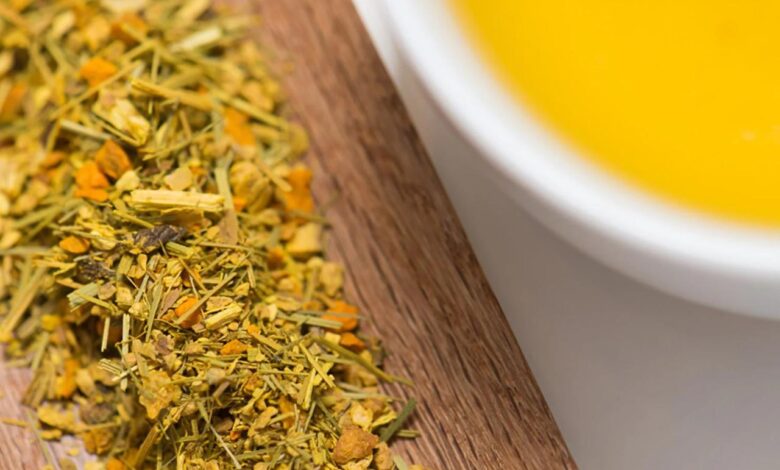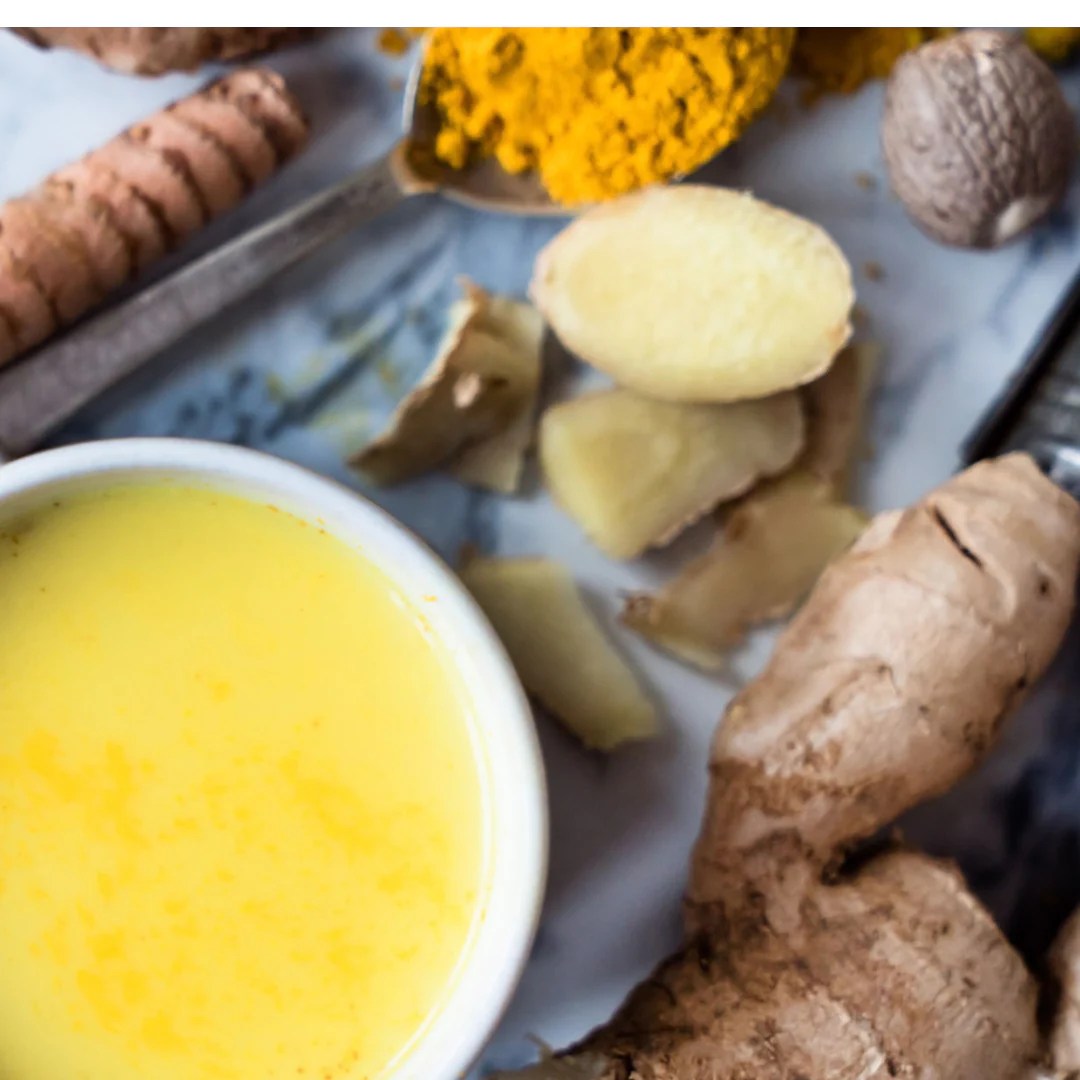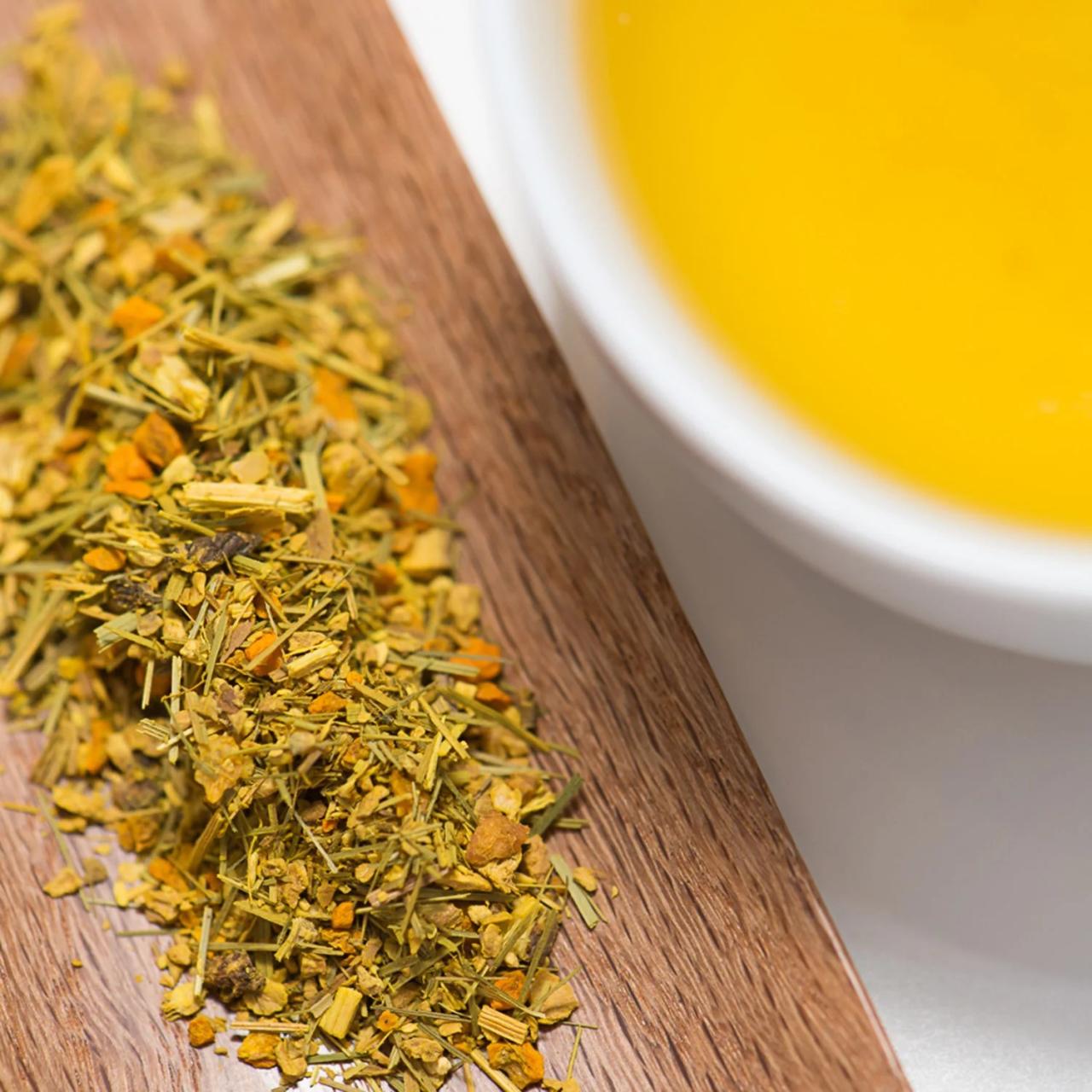
Ginger Turmeric Herbal Tea: A Wellness Drink With Ancient Roots
Ginger turmeric herbal tea, a soothing blend with ancient roots, has captivated taste buds and health enthusiasts for centuries. This golden elixir, brimming with potent antioxidants and anti-inflammatory properties, offers a natural way to boost immunity, ease digestive discomfort, and promote overall well-being.
From ancient Ayurvedic practices to modern wellness trends, ginger turmeric herbal tea has earned its place as a beloved beverage, cherished for its vibrant flavor and remarkable health benefits.
The origins of this comforting concoction can be traced back to ancient civilizations, where ginger and turmeric were revered for their medicinal properties. In traditional Chinese medicine, ginger was used to alleviate nausea and promote digestion, while turmeric held a prominent role in Ayurvedic practices for its anti-inflammatory and healing powers.
The combination of these two powerful ingredients creates a synergistic effect, amplifying their individual benefits and offering a holistic approach to health and wellness.
Introduction to Ginger Turmeric Herbal Tea

Ginger turmeric herbal tea is a popular beverage enjoyed worldwide for its distinct flavor and potential health benefits. This potent combination of ginger and turmeric roots has been used for centuries in traditional medicine systems, and its popularity continues to rise as people seek natural ways to enhance their well-being.
Origins and History
Ginger and turmeric have a rich history, with roots tracing back to ancient civilizations in Asia. Ginger, scientifically known as Zingiber officinale, originated in Southeast Asia and has been cultivated for thousands of years. It was highly valued in ancient Chinese medicine, where it was used for various ailments, including digestive issues and inflammation.
Turmeric, Curcuma longa, also hails from Southeast Asia and has been a staple in Indian cuisine and Ayurvedic medicine for centuries. Its vibrant yellow color and unique flavor have made it a popular spice and a key ingredient in traditional remedies.
Traditional Uses and Cultural Significance
Ginger and turmeric have long held cultural significance in various parts of the world. In traditional Chinese medicine, ginger is believed to warm the body, promote circulation, and aid digestion. It is commonly used in soups, teas, and stir-fries to enhance flavor and provide therapeutic benefits.
Turmeric, on the other hand, is a cornerstone of Ayurvedic medicine, where it is considered a powerful anti-inflammatory and antioxidant agent. It is often incorporated into curries, rice dishes, and beverages, adding a vibrant color and earthy flavor.
Health Benefits of Ginger and Turmeric
Ginger and turmeric have been extensively studied for their potential health benefits, and research has revealed numerous properties that support their traditional uses. Ginger is known for its anti-inflammatory and anti-nausea properties. It can help reduce muscle soreness, alleviate menstrual cramps, and soothe an upset stomach.
Turmeric, renowned for its vibrant yellow pigment curcumin, possesses potent anti-inflammatory and antioxidant properties. Studies suggest that curcumin may help protect against chronic diseases, including heart disease, cancer, and Alzheimer’s disease.
Preparation and Ingredients
This ginger turmeric herbal tea is a simple and delicious drink that can be enjoyed any time of day. It’s packed with flavor and potential health benefits. Let’s dive into the details of preparing this nourishing beverage.
Ginger and Turmeric Selection
The type of ginger and turmeric you use can affect the flavor and potency of your tea.
- Fresh Ginger:Fresh ginger offers the most intense flavor and aroma. Look for firm, unblemished ginger roots with a smooth surface. Younger ginger, with thinner skin, tends to be milder in flavor.
- Dried Ginger:Dried ginger is a convenient option, available in powder or ground form. While it’s less potent than fresh ginger, it still provides a good amount of flavor and benefits.
- Fresh Turmeric:Fresh turmeric has a vibrant orange color and a slightly peppery flavor. Like ginger, you can find it in both fresh and dried forms. Fresh turmeric is known for its earthy and slightly bitter taste.
- Turmeric Powder:Turmeric powder is a common spice found in most kitchens. It’s readily available and offers a potent source of curcumin, a potent antioxidant.
Ginger Turmeric Herbal Tea Recipe
Here’s a basic recipe for ginger turmeric herbal tea:
Ingredients:
- 1 inch piece of fresh ginger, peeled and thinly sliced
- 1 teaspoon turmeric powder
- 1 cup of water
- Honey or maple syrup to taste (optional)
Instructions:
- Bring the water to a boil in a small saucepan.
- Add the ginger and turmeric powder to the boiling water.
- Reduce heat and simmer for 5-10 minutes, or until the tea has a strong ginger and turmeric flavor.
- Strain the tea through a fine-mesh sieve into a mug.
- Add honey or maple syrup to taste, if desired.
Benefits of Additional Herbs and Spices
Adding other herbs and spices can enhance the flavor and potential health benefits of your ginger turmeric tea.
- Cinnamon:Cinnamon adds warmth and sweetness to the tea, and it’s known for its potential anti-inflammatory properties.
- Black Pepper:Black pepper contains piperine, which can enhance the absorption of curcumin from turmeric.
- Honey:Honey adds sweetness and has soothing properties that can help soothe a sore throat.
Health Benefits and Potential Uses: Ginger Turmeric Herbal Tea

Ginger turmeric herbal tea has gained popularity due to its potential health benefits, attributed to the active compounds in ginger and turmeric. These compounds possess anti-inflammatory, antioxidant, and antimicrobial properties, contributing to a wide range of health benefits.
Digestive Health
Ginger and turmeric have long been used to alleviate digestive discomfort. Ginger, in particular, is known for its ability to soothe nausea and vomiting, making it beneficial for conditions like motion sickness and morning sickness. Turmeric, on the other hand, supports healthy digestion by stimulating bile production, which aids in the breakdown and absorption of fats.
A cup of ginger turmeric herbal tea is my go-to for a soothing evening, especially after a hearty meal like Chef John’s Zombie Meatloaf. The warmth of the ginger and turmeric helps settle my stomach and the earthy flavors are a perfect counterpoint to the richness of the meatloaf.
It’s the perfect way to end a satisfying meal and transition into a relaxing evening.
Both ginger and turmeric can also help reduce bloating and gas.
After a soothing cup of ginger turmeric herbal tea, I always crave something sweet and comforting. That’s when I whip up a batch of this easy gluten free carrot cake , a perfect pairing for the warming spices in my tea.
The cake’s moist texture and subtle sweetness complement the ginger and turmeric’s earthy notes, making for a delightful afternoon treat.
Immune Support
Ginger and turmeric possess immune-boosting properties. Ginger contains gingerol, a compound with antiviral and antibacterial effects, potentially helping to fight off infections. Turmeric’s curcumin has been shown to modulate the immune system, reducing inflammation and enhancing the body’s natural defenses.
Anti-inflammatory Effects
Both ginger and turmeric are renowned for their anti-inflammatory properties. Ginger contains gingerols and shogaols, which effectively reduce inflammation throughout the body. Turmeric’s curcumin is a potent anti-inflammatory agent, particularly beneficial for chronic inflammatory conditions like arthritis.
A soothing ginger turmeric herbal tea is always a comforting choice after a hearty meal, especially one like the loaded butternut squash cordon bleu I recently tried. The sweet and savory flavors of the squash and the cheesy filling were a delicious combination, but a little bit of warmth from the ginger turmeric tea helped settle my stomach and provide a perfect ending to the meal.
Potential Risks and Side Effects
While ginger turmeric herbal tea offers potential health benefits, it’s essential to be aware of potential risks and side effects.
Ginger
- Gastrointestinal Issues:Ginger can cause heartburn, indigestion, and diarrhea in some individuals, especially when consumed in large quantities.
- Interactions with Medications:Ginger may interact with certain medications, such as blood thinners and diabetes medications. Consult with a healthcare professional before consuming ginger if you are taking any medications.
- Pregnancy:Ginger is generally considered safe during pregnancy, but it’s best to consult with a healthcare provider before consuming it, especially in large quantities.
Turmeric
- Gastrointestinal Issues:Turmeric can cause stomach upset, including heartburn and diarrhea, especially when taken in high doses.
- Interactions with Medications:Turmeric may interact with certain medications, including blood thinners and chemotherapy drugs. Consult with a healthcare professional before consuming turmeric if you are taking any medications.
- Gallstones:Individuals with gallstones should avoid consuming turmeric, as it can increase bile production, potentially exacerbating their condition.
- Pregnancy:Turmeric is generally considered safe during pregnancy, but it’s best to consult with a healthcare provider before consuming it, especially in large quantities.
Ginger Turmeric Herbal Tea in Modern Society
The rise of ginger turmeric herbal tea is a testament to the growing interest in natural remedies and wellness beverages. This ancient concoction, known for its purported health benefits, has captured the attention of modern consumers seeking holistic approaches to well-being.
Marketing and Branding Strategies
Companies selling ginger turmeric herbal tea products employ various marketing and branding strategies to attract consumers. These strategies often focus on highlighting the natural origins, health benefits, and unique flavors of the tea.
- Emphasis on Natural Ingredients:Many brands emphasize the use of organic, ethically sourced ginger and turmeric, appealing to consumers seeking natural and healthy options. This approach aligns with the growing trend of organic and sustainable food and beverage products.
- Highlighting Health Benefits:Marketing campaigns often feature the potential health benefits of ginger and turmeric, such as anti-inflammatory properties, immune support, and digestive aid. This approach leverages the consumer’s interest in preventative healthcare and natural remedies.
- Focus on Flavor and Sensory Experience:Companies often create unique flavor combinations and variations of ginger turmeric tea, incorporating other natural ingredients like lemon, honey, or cinnamon. This approach caters to the evolving palates of consumers seeking diverse and flavorful experiences.
- Lifestyle Branding:Many brands associate ginger turmeric tea with a healthy and active lifestyle, featuring imagery of individuals engaging in yoga, meditation, or outdoor activities. This strategy positions the tea as part of a holistic wellness routine.
Impact on the Food and Beverage Industry, Ginger turmeric herbal tea
The growing popularity of ginger turmeric herbal tea has had a significant impact on the food and beverage industry. This trend has led to:
- Increased Demand for Ginger and Turmeric:The rising popularity of ginger turmeric tea has increased the demand for these ingredients, prompting farmers to expand their production and suppliers to explore new sourcing options.
- Innovation in Flavor Profiles:The trend has also spurred innovation in the development of new and exciting flavor combinations for ginger turmeric tea. Companies are experimenting with different spices, herbs, and fruits to create unique and appealing blends.
- Expansion of the Herbal Tea Market:The success of ginger turmeric tea has contributed to the expansion of the overall herbal tea market, as consumers explore other natural and healthy beverage options.
- Integration into Food Products:Ginger and turmeric are increasingly being incorporated into other food products, such as soups, sauces, and snacks, reflecting the growing consumer interest in these ingredients.
Recipes and Variations

The versatility of ginger turmeric herbal tea allows for a wide range of flavor combinations and customizations. This section explores various recipes and variations, providing a glimpse into the diverse world of this popular beverage.
Recipes and Flavor Profiles
A table showcasing various ginger turmeric herbal tea recipes, along with their unique ingredients and flavor profiles, is presented below.| Recipe Name | Ingredients | Flavor Profile ||—|—|—|| Classic Ginger Turmeric Tea | Ginger, Turmeric, Water | Spicy, Earthy, Warming || Citrus Ginger Turmeric Tea | Ginger, Turmeric, Lemon, Honey | Spicy, Citrusy, Sweet || Mint Ginger Turmeric Tea | Ginger, Turmeric, Mint Leaves, Honey | Spicy, Refreshing, Cooling || Cinnamon Ginger Turmeric Tea | Ginger, Turmeric, Cinnamon Stick, Honey | Spicy, Sweet, Aromatic || Apple Ginger Turmeric Tea | Ginger, Turmeric, Apple Slices, Cinnamon Stick, Honey | Sweet, Fruity, Warming |
Visual Representations
A series of visually appealing images depicting different ginger turmeric herbal tea preparations and variations can enhance the understanding of the diverse flavors and aesthetics associated with this beverage.* Image 1:A steaming cup of classic ginger turmeric tea with a slice of lemon and a sprig of mint, showcasing the vibrant yellow hue of turmeric and the earthy tones of ginger.
Image 2
A mason jar filled with a layered citrus ginger turmeric tea, with lemon slices, ginger chunks, and turmeric powder, highlighting the refreshing and visually appealing nature of this variation.
Image 3
A rustic wooden tray with a teapot filled with cinnamon ginger turmeric tea, alongside a small bowl of honey and cinnamon sticks, emphasizing the warmth and aroma of this blend.
Tips and Tricks for Enhancing Flavor and Aroma
Several tips and tricks can enhance the flavor and aroma of ginger turmeric herbal tea.* Use fresh ingredients:Fresh ginger and turmeric provide the most potent flavor and aroma.
Grate ginger and turmeric
Grating ginger and turmeric releases more of their essential oils, resulting in a stronger flavor.
Steep for the right amount of time
Steeping for too long can result in a bitter taste. Aim for 5-10 minutes for optimal flavor.
Add honey or other sweeteners
Honey complements the spicy notes of ginger and turmeric, adding sweetness and depth of flavor.
Experiment with different spices
Cinnamon, cloves, cardamom, and black pepper can be added to enhance the flavor profile.
Serve hot or cold
Ginger turmeric tea can be enjoyed hot or cold, depending on personal preference.

